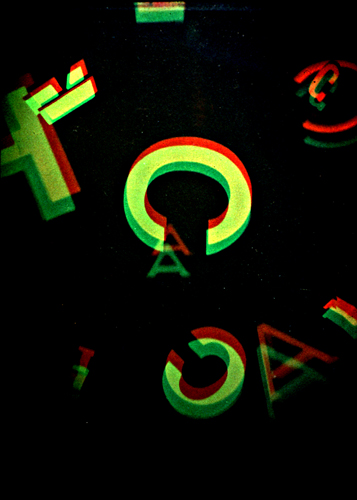T.H.: I would like to discuss this point with a specific example. Can you please explain the special syntax of what you call holographic poems?
E.K.: Between 1983 and 1993 I created a series of twenty-four holographic poems in which I explore a discontinuous syntax of fluctuating or transforming letters and words. So there is no gestalt, no unified form.
T.H.: How would you specify the visual efficacy of holography in this context?
E.K.: Holography was the technical solution for an aesthetic problem that I had created for myself, because I felt that the arrival of the first personal computers at the very end of the 70s and the early 80s signified a paradigm shift. They signified very clearly the end of the Gutenberg Galaxy, to use McLuhan’s term. The typographic paradigm was over. The computer is no longer just a production tool. Now you can present on and with the computer and the reader can experience the work directly on the computer.
